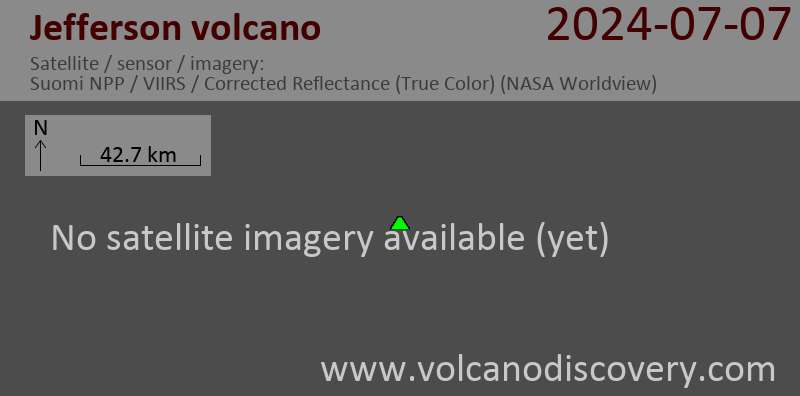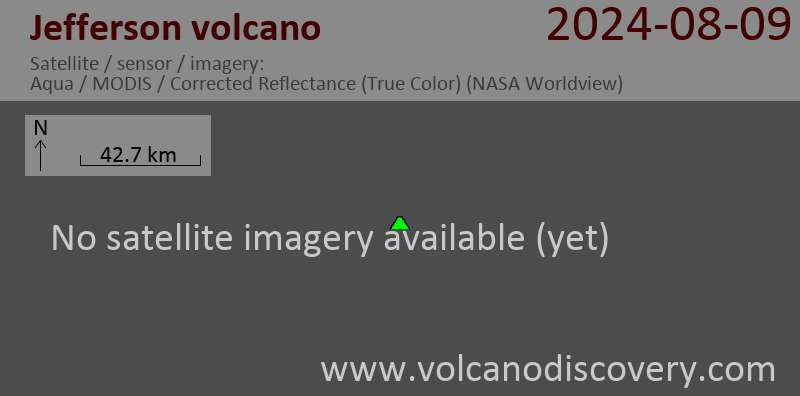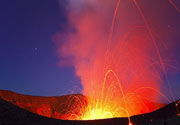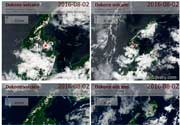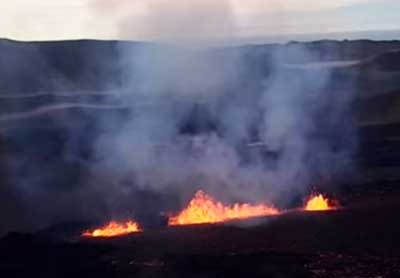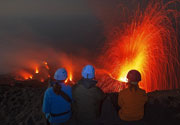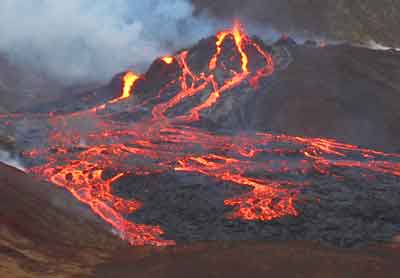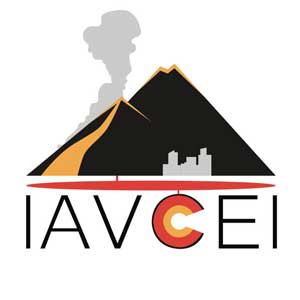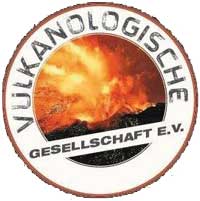Jefferson Volcano
Updated: May 1, 2025 04:06 GMT -
stratovolcano
Oregon (Canada and USA (mainland)), 44.67°N / -121.8°W 
Summit height: 3199 m / 10,495 ft
Current status: normal or dormant (1 out of 5)
Mt Jefferson volcano, one of the lesser known Cascade volcanoes, is the second highest mountain in Oregon. Although it is deeply eroded and has probably not erupted for at least about 1000 years, it is still considered active.
[smaller] [larger]
Jefferson volcano eruptions: 950 AD (?), 4500 BC
Latest nearby earthquakes
| Date and Time | Mag / Depth | Distance / Location | |||
|---|---|---|---|---|---|
Background
Jefferson was constructed in 2 major episodes interrupted by extensive glacial erosion. The first eruptive period began about 290,000 years ago and built an andesitic-to-dacitic volcano which might have even been higher than the current summit.The second eruptive phase, including Jefferson volcano's largest known eruptions, took place between ca. 70,000 and 35,000 years ago and their products for most of the upper part of the stratovolcano. Pyroclastic flow deposits are found as far as 15 km to the east and ash fall deposits can still found as far as Arco in southeast Idaho. In the past 12,000 years, several eruptions took place on vents near the Cascade crest south of Jefferson, building cinder cones and lava flows that traveled down glacial valleys, including Forked Butte and North Cinder Peak. The most recent eruption from Jefferson volcano was also from a cinder cone on the flank of South Cinder Peak, with a lava flow reaching Lake Marion to the west.
Jefferson had been named by Lewis and Clark in order to honor the president who had sponsored their expedition.
---
Source: GVP
Significant volcanic eruptions: Jefferson volcano
No historic eruptions are known from Jefferson volcano, but evidence from at least 2 eruptions during the past 10,000 years can be found in the geological record.
The table below lists all known eruptions (date in bold face) of Jefferson volcano in historic times and during the past 10,000 years. Updates on the most recent volcanic activity of Jefferson can be found on the news page of Jefferson volcano.
| Date | Note | VEI | Deaths | Damage | |
|---|---|---|---|---|---|
| S of Jefferson (South Cinder Peak) | ? | ||||
| SSE of Jefferson (Forked Butte) | ? | ||||
Remark:
Our list of volcanic eruptions closely follows the database of eruptions of the Smithsonian's Global Volcanism Project (GVP), the internationally most recognized data source for volcanic eruptions, but also includes significant eruptive episodes or related volcano events. "Volcanic eruptions" are usually to be understood as sequences of individual eruptive episodes that can follow each other, or even overlap (if several vents are involved), and can last many years, decades or even longer. For example, the current activity of Stromboli volcano is understood as a single eruption that has been ongoing since 1934.
Sources: NOAA National Centers for Environmental Information (NCEI), Global Significant Volcanic Eruptions Database. doi:10.7289/V5TD9V7K | Global Volcanism Project / Smithsonian Institution
Jefferson Volcano FAQ
+When was the last eruption of Jefferson volcano?
The last confirmed eruption of Jefferson occurred in 950 AD.
Latest satellite images
Jefferson Volcano Maps
Below is a selection of maps showing the location and surroundings of the volcano at various resolutions based on aerial-imagery / terrain maps. Feel free to use them for non-commercial purposes on your blog or website as long as you credit them with a link back to this page (click to copy it).

Satellite/aerial-type map of Jefferson volcano (world scale)

Terrain-type map of Jefferson volcano (world scale)

Satellite/aerial-type map of Jefferson volcano (region scale large)

Terrain-type map of Jefferson volcano (region scale large)

Satellite/aerial-type map of Jefferson volcano (region scale medium)

Terrain-type map of Jefferson volcano (region scale medium)

Satellite/aerial-type map of Jefferson volcano (region scale small)

Terrain-type map of Jefferson volcano (region scale small)

Satellite/aerial-type map of Jefferson volcano (local scale large)

Terrain-type map of Jefferson volcano (local scale large)

Satellite/aerial-type map of Jefferson volcano (local scale medium)

Terrain-type map of Jefferson volcano (local scale medium)

Satellite/aerial-type map of Jefferson volcano (local scale small)

Terrain-type map of Jefferson volcano (local scale small)

Satellite/aerial-type map of Jefferson volcano (scale of 10s of km)

Terrain-type map of Jefferson volcano (scale of 10s of km)

Satellite/aerial-type map of Jefferson volcano (scale of 20-40 km)

Terrain-type map of Jefferson volcano (scale of 20-40 km)

Satellite/aerial-type map of Jefferson volcano (scale of approx. 10-20 km)

Terrain-type map of Jefferson volcano (scale of approx. 10-20 km)

Satellite/aerial-type map of Jefferson volcano (scale of 5-10 km)

Satellite/aerial-type map of Jefferson volcano (scale of few kilometers)




